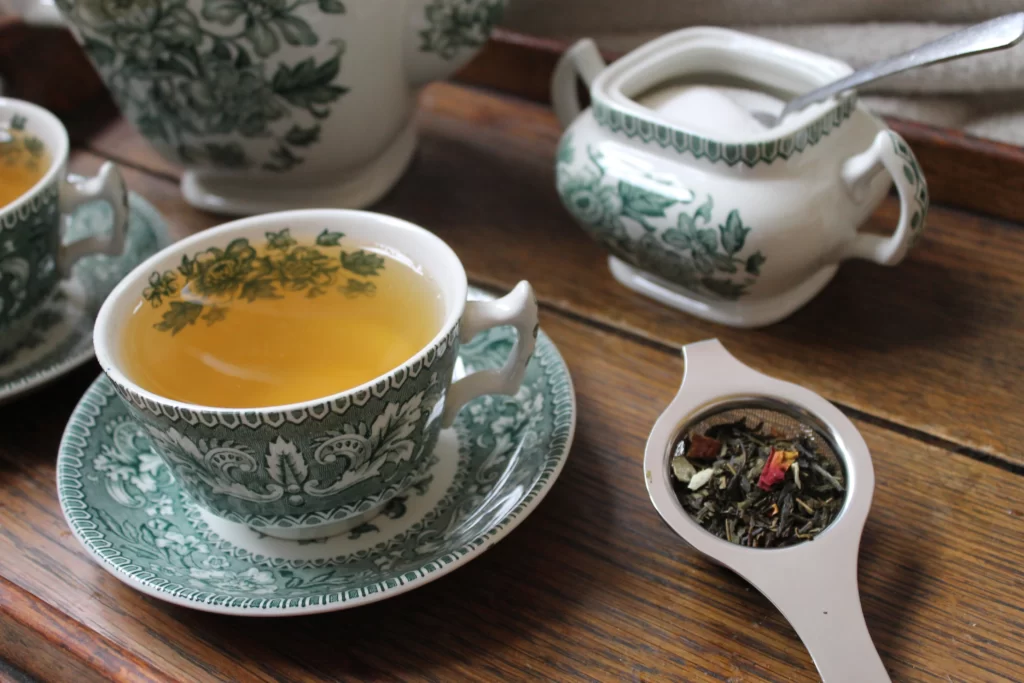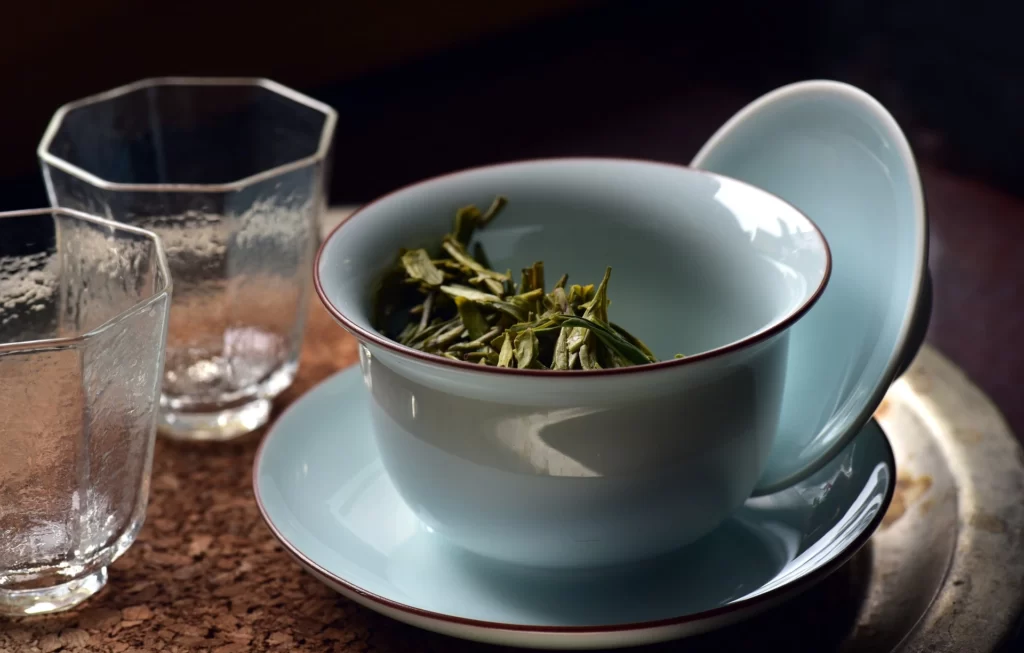I’d been into tea drinking for years before I even discovered the whole world of Eastern tea rituals and traditional tea ceremonies. They’re not well-known in the UK at all, even when you’re a tea addict shopping for loose leaf at the likes of Whittard and Teapigs.
But venture online and you’ll come across a whole range of new methods that are going to go straight over your head (just like they went over mine).
So, I’ve come up with a brief guide so you can get the gist of what’s happening. A tea ceremony is a beautiful, complex ritual. You can find whole books on how to brew in just one way. But I’m not going to get into that now. Instead, here are the basic terms and methods you’ll find, so you can understand what the tea snobs are on about and join the conversation!
Western vs Eastern Tea Prep

First, ditch the tea bags. We’re dealing with loose leaf tea. I’ve already written a guide to brewing loose leaf tea in Western style, so check that out if you need to brush up your knowledge.
The biggest difference between Western and Eastern is the amount of tea used and the brew time.
Western – take 2g of tea (approximately 1 teaspoon) and brew in 500ml (or a cup) of water for 2 minutes. Water temperature and brew time depend on the type of tea, but the point of this method is to brew a small amount of tea for a long time, so the cup you’re left with is infused with all the flavours from the tea.
Eastern – take 8g of tea (approximately 4 teaspoons) and brew multiple times in 200ml of water. Just like the Western tea brewing style, the water temperature depends on the type of tea. This style is about brewing a large amount of tea multiple times for very short periods (10 seconds or so). With each “brew” you’ll get a different flavour from the tea as it opens and unfurls.
That’s the basic difference, but the Eastern tea ceremony can be varied.
Chinese Tea Ceremony
Cha Doe, the traditional Chinese tea ceremony, is about enjoying your tea, savouring the aroma, flavours and relaxing. The tea is prepared in a clay teapot, then poured into small cups, filling them about half full – the empty half is filled with friendship (according to custom) for those you’re sharing the tea ceremony with.
From there, the ceremony follows the Gong Fu method explained below.
Japanese Tea Ceremony
A traditional Japanese tea ceremony (The Way of Tea) is steeped in rich history and usually requires Matcha style tea. This tea is becoming increasingly popular in the Western world – it’s powdered tea leaves that are whisked into water, rather than infused and removed.
For a traditional tea ceremony, everything from the clothes you wear to the way you sit in the tearoom or garden is significant. The tea server prepares the tea and pours it for the guests who enjoy as many servings as they please. Unlike the Chinese tea ceremony, the powdered tea is made fresh each round as you can’t re-infuse leaves you’ve drank!
Korean Tea Ceremony
The Darye tea rite in Korea generally follows the Gong Fu style ceremony I’ve outlined below, but with differences. There are multiple types of Korean tea ceremonies you might come across. The most notable, and rather beautiful, difference I’ve seen is the representation of elements in the ceremony. Using different coloured trays and utensils, heaven, water, earth and people are all represented and honoured.
Like the Japanese ceremony, the way you act during the ceremony is as important as the tea itself.
Tea Terms and Equipment You’ll Come Across

Now you’ve got a basic idea of method, you need to understand key terms.
Gong Fu
A specific kind of tea ceremony and one that’s used often in the Western world by those that know how. It’s the one I started with and can be very easy to get used to.
Gaiwan
I first came across this term on tea forums. A Gaiwan tea pot is a porcelain pot, with a lid and saucer. The porcelain absorbs some of the heat from the tea, making it ideal to brew green and white tea leaves without scorching them. You can drink directly from the Gaiwan, or decant into a cup, or use it in replacement of the pot in the Gong Fu style ceremony.
Rinse
The first step in Eastern tea ceremonies. The first infusion, when the water hits the tea leaves for the first time, is discarded. Like you’re rinsing the tea leaves. This opens them up and gets them ready for the first real infusion.
Fairness Cup
When you’re brewing for multiple people, you pour the tea from the pot into a fairness cup. If you poured directly into each small cup for each person one after the other, the last cup would be more infused than the first. By pouring into the fairness cup first, everyone receives the same tea liquor at the same level of infusion.
Steep
Each time you infuse your leaves to brew more tea, that’s a “steep”. You might come across guidance for steeping some leaves, e.g. “5s rinse. Steeps: 10s, 15s, 20s, 40s, 1m…” but you can usually judge when a steep is finished by the colour or aroma of the tea. Each steep will get longer as time goes by, as the leaves release more of their flavour.
Tea Pet
A cute accessory that sits at the side of your tea ceremony. These are small clay sculptures that you douse with tea in each steep. Some will change colour, others will gradually reveal a pattern each time you douse them. Tea pets are decorative and fun.
How to Do A Simple Gong Fu Tea Ceremony

You will need: a small 200ml tea pot or Gaiwan, a fairness cup to decant into, and small cups for drinking from. I recommend this tea set, but you can make-do with a 1-cup teapot, ordinary mug for decanting, and egg cups for drinking from.
- Add 8g of tea leaves to your pot, fill with water, then discard of the water after 5 seconds (rinse).
- Fill with water again, wait 10 seconds, pour into the fairness cup. Pour from the fairness cup into each drinking cup.
- Enjoy the aroma of the tea from the pot lid.
- Sip the tea from the small drinking cup.
- Repeat steps 2 to 4, increasing the wait time by 5 seconds or until the tea seems adequately steeped and aromatic.
When you’re reading about it, the Gong Fu tea ceremony seems like a lot of steps for very little tea. Sometimes a visual example is better – so I recommend watching this explainer video by Mei Leaf for a simple Gong Fu ceremony demonstration.
